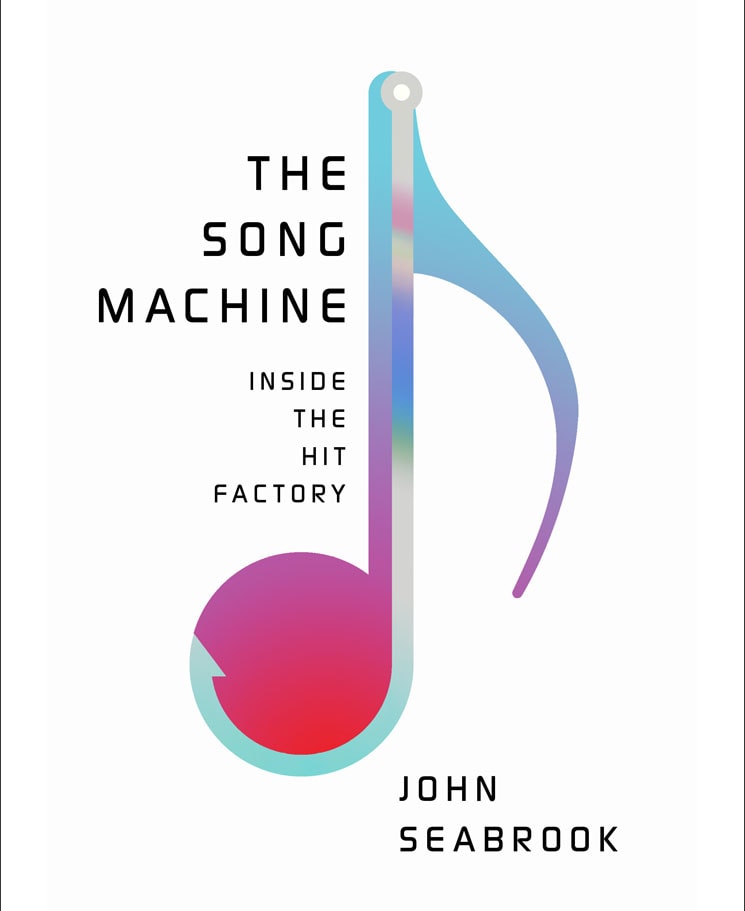Few industries are as shrouded in mystery as pop songwriting. Trying to root out the true author of a single track offers Cold War levels of misinformation in an effort to protect financial interests and perceived artistic credibility, which makes the new book from The New Yorker's John Seabrook all the more intriguing; The Song Machine: Inside the Hit Factory offers a unique look behind the curtain, chronicling the rise of the Swedish hit-making machine behind a full quarter of today's Billboard Hot 100 singles.
Seabrook traces its origins back to Swedish DJ Denniz Pop, who first found international success producing hits for early '90s pop behemoth Ace of Base. Shortly after the quartet scored their first international hit, "All That She Wants," he founded Cheiron Studios in Stockholm and recruited a young metal singer named Max Martin as his protégé. The duo's penchant for writing pop songs with a light urban edge made them the perfect behind the scenes partners when Backstreet Boys, a new, unproven U.S. group, came calling.
Cheiron's clutch of writers and producers rode the late '90s/early 2000s pop wave, launching teen stars like BSB, N*SYNC and Britney Spears to superstardom. In the process, they pioneered a new approach to songwriting that did away with the longstanding emphasis on lyrics and melody, replacing it with a more urban approach that prioritized beats and production and an assembly line approach to writing that pervades the industry today.
The book reads more like a series of essays than a straight narrative, peppering in chapters chronicling the rise of superstar artists like Spears, Katy Perry and Rihanna between ones dedicated to industry insiders like Spotify's Daniel Ek and writers including Martin protégé Dr. Luke and top line singer (the people responsible for those still-important melodies) Ester Dean.
Rather than frame these pieces as a poptimist's exploration of craft, Seabrook uses his concern for his young son's pop music education (Seabrook doesn't "get" today's Top 40) as a framing device, although Seabrook never goes so far as to either champion or damn the system he describes, giving factions on either side fuel for their fire.
His investigation never uncovers any industry secrets, and it could have benefitted from a stronger personal voice, but in connecting the far-flung dots connecting New Edition and New Kids on the Block to Kelly Clarkson and Taylor Swift, The Song Machine: Inside the Hit Factory paints a heretofore-unseen picture of the songwriting team that dominates the music industry.
(WW Norton)Seabrook traces its origins back to Swedish DJ Denniz Pop, who first found international success producing hits for early '90s pop behemoth Ace of Base. Shortly after the quartet scored their first international hit, "All That She Wants," he founded Cheiron Studios in Stockholm and recruited a young metal singer named Max Martin as his protégé. The duo's penchant for writing pop songs with a light urban edge made them the perfect behind the scenes partners when Backstreet Boys, a new, unproven U.S. group, came calling.
Cheiron's clutch of writers and producers rode the late '90s/early 2000s pop wave, launching teen stars like BSB, N*SYNC and Britney Spears to superstardom. In the process, they pioneered a new approach to songwriting that did away with the longstanding emphasis on lyrics and melody, replacing it with a more urban approach that prioritized beats and production and an assembly line approach to writing that pervades the industry today.
The book reads more like a series of essays than a straight narrative, peppering in chapters chronicling the rise of superstar artists like Spears, Katy Perry and Rihanna between ones dedicated to industry insiders like Spotify's Daniel Ek and writers including Martin protégé Dr. Luke and top line singer (the people responsible for those still-important melodies) Ester Dean.
Rather than frame these pieces as a poptimist's exploration of craft, Seabrook uses his concern for his young son's pop music education (Seabrook doesn't "get" today's Top 40) as a framing device, although Seabrook never goes so far as to either champion or damn the system he describes, giving factions on either side fuel for their fire.
His investigation never uncovers any industry secrets, and it could have benefitted from a stronger personal voice, but in connecting the far-flung dots connecting New Edition and New Kids on the Block to Kelly Clarkson and Taylor Swift, The Song Machine: Inside the Hit Factory paints a heretofore-unseen picture of the songwriting team that dominates the music industry.
